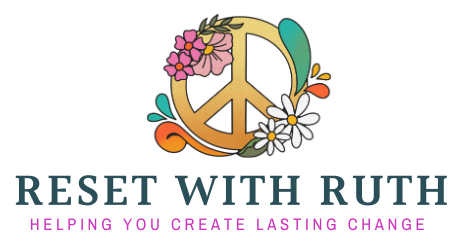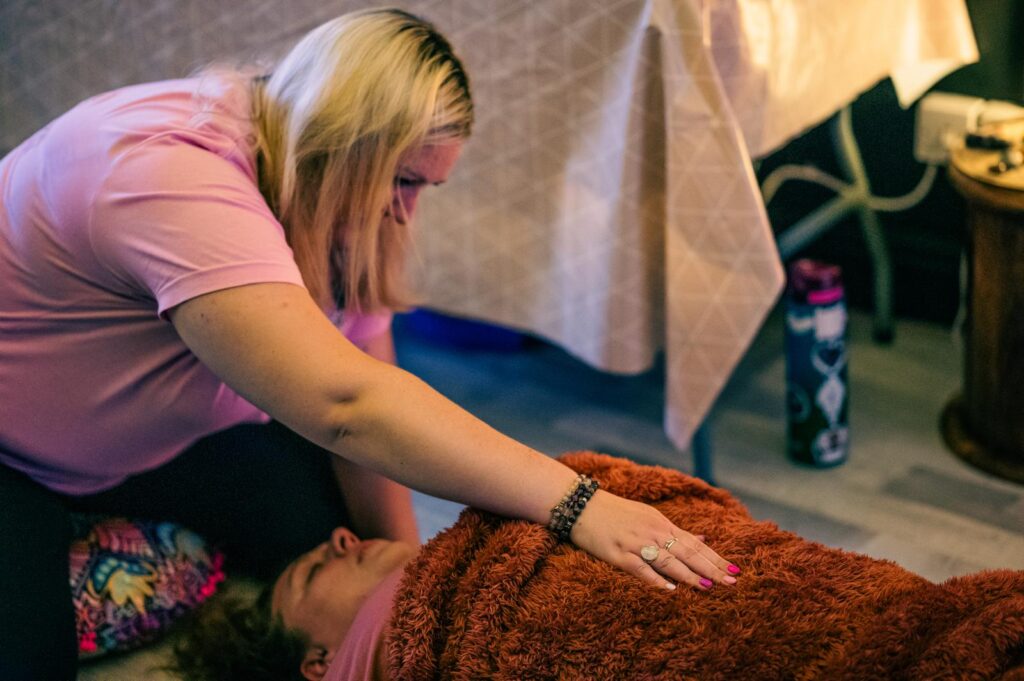In a world filled with hustle and stress, our quest for wellbeing becomes more crucial than ever. As a compassionate non-judgmental practitioner, I invite you to explore a harmonious blend of ancient wisdom and modern science that has helped me to feel well, following my own grief, addiction and trauma recovery journey. Let’s dive into practices that nurture mind, body, and spirit, including the gorgeous and unique blend of some of the most popular modalities that I’m trained in…lets go!
Compassionate Inquiry: Penny drop moments, that create the internal shifts we’re yearning
What Is Compassionate Inquiry?
Compassionate inquiry is a Gabor Mate modality that offers a gateway to self-discovery. As the practitioner, I gently frame specialist questions that explore our beliefs, possible traumas, and patterns, to facilitate awareness and access to new healing. Rather than focussing on what was, the aim is to join the dots of deep self awareness whilst creating specific actionable tasks, that will proactively change the trajectory of our lives and take back control. Remember, your nervous system doesn’t function through thoughts; it functions through feelings. It’s a beautiful opportunity to explore the depths within, gently, quickly and with a solution focused conclusion. As we build this practice, we can explore what’s known as ‘parts work’, where we can identify parts of ourselves that need to be seen, heard and held. By identifying parts of us that may have been created as a protective mechanism, we can give that a ‘voice’ and communicate its needs. This can pave the way for profound deep healing where the client can learn to reparent parts of themselves, in order to show up in a more authentic and attuned way. You can book this as a 1-2-1 session.
Nervous System State Mapping
Nervous system state mapping involves looking at the state we operate within usually, and the nervous system states we tend to default to when we’re overwhelmed and stressed. Perhaps they’re the same! There’s no one size fits all, but by understanding what fight, flight and freeze mean to us and how they present within our mind and body, we can then utilise that knowledge to inform trauma an effective toolkit of well-being practices, anxiety management, and emotional regulation.
Functional and therapeutic Breathwork, the art of conscious breathing
As a qualified advanced breathwork practitioner, I can help those navigating long covid, chronic pain and chronic fatigue by investigating breathing patterns and teaching people how to correct dysfunctional breathing. By learning to breathe correctly, you improve blood flow and oxygen delivery to your body and brain. By consciously altering your breath, I can teach you how to proactively influence your autonomic nervous system. This shift takes you from a stress response (fight-or-flight) to a more relaxed state (rest-and-digest) and from a freeze response (demotivated, unable to function, feeling stuck, disassociated) into a more connected flow state. You can experience this within a 1-2-1 session.
How therapeutic breathwork differs from functional breathwork and yogic breath
Therapeutic or “somatic” breathwork releases tension stored in our bodies. Through intentional circular breathing without pause, for an extended amount of time, we altar our state of consciousness. We connect with the rhythm of our body and deeply tune into body sensations that would usually go unnoticed. This technique is incredibly therapeutic and as such, it’s held in a trauma informed way with absolute care and consent. This form of breathing reduces the level of carbon dioxide in the bloodstream, temporarily reducing the alkalinity in the body. It positively affects metabolism, digestion and immune function by increasing blood flow and oxygen to your vital organs. This technique can also release emotions, joy, sadness and anger, as well as stored stress in our muscles, joints and fascia. These are all reasons to be sure the practitioner you invest in, has also invested in proper training, insurance and works ethically. You can experience this within a group setting called Conscious Connected Breathwork Reset, or book a 1-2-1.
Harmonising with Sound Therapy
Sound therapy is fast becoming a go-to relaxation method, but research shows its benefits stretch into pain management, improved sleep, immune system support and cognitive function. Imagine lying back and being bathed by the vibrational sounds of ancient instruments that resonate with our cells, it’s stunning! But there’s science in this practice too – research has shown that sound therapy can swiftly alter our state from beta (awake), to Delta (deep meditation) with ease, engaging the chemical release of endorphins, dopamine and melatonin which has been proven to help mental clarity and promote the bodies natural healing process. In fact, scientific research has found that this modality can improve sleep, reduce stress, anger and fatigue and can even boost immune function! Whether it’s tuning forks, Tibetan singing bowls, crystal bowls or the symphonic gongs, this modality has such positive effects on the mind, body and self. You can book this as a 1-2-1 session, or attend a group Somatic Sound Bath Reset.
As you can see, this hugely differs from breathwork that you’ll find in a yoga practice or with a mindfulness or meditation teacher. Whilst I’m trained in equipping others with a huge range of breathwork techniques to down regulate or up regulate the nervous system, it’s so important to know how therapeutic breathwork differs.
Cold Water Therapy, in safety with a nervous system lens
Cold water therapy is fast becoming a trend. However, it’s important to understand exactly what cold water immersion does to the body and mind. It’s also key to learn when, where and how it’s safe to practice. My unpopular opinion is – it’s not safe for everyone to try it and to adopt it as a daily/weekly practice! There are huge and beautiful benefits to cold water therapy, but it does rely on becoming far more educated on this well-being technique than dunking in cold ice baths, or open water just for bants and social media trends. If you’d like to learn, why not register for a 1-2-1 with Ruth who will share her qualified skills and experience with cold water therapy, or look for a group workshop on the session page.
Meditation
Did I say I’m a trained meditation teacher?! I love keeping things real with meditation – it shouldn’t be seen as something that can only be practiced by people wearing beads and yoga pants! This is a hugely beneficial way of gaining presence, de-stressing and tapping into mental clarity. And there are SO many ways that we can utilise meditation in our daily lives. There are a lot of myths around meditation – it’s not one size fits all and it certainly doesn’t stop your mind racing when you begin, that takes time, patience and a dedicated practice. If you’d like to master meditation, I’d love to help you and keep it fun!

